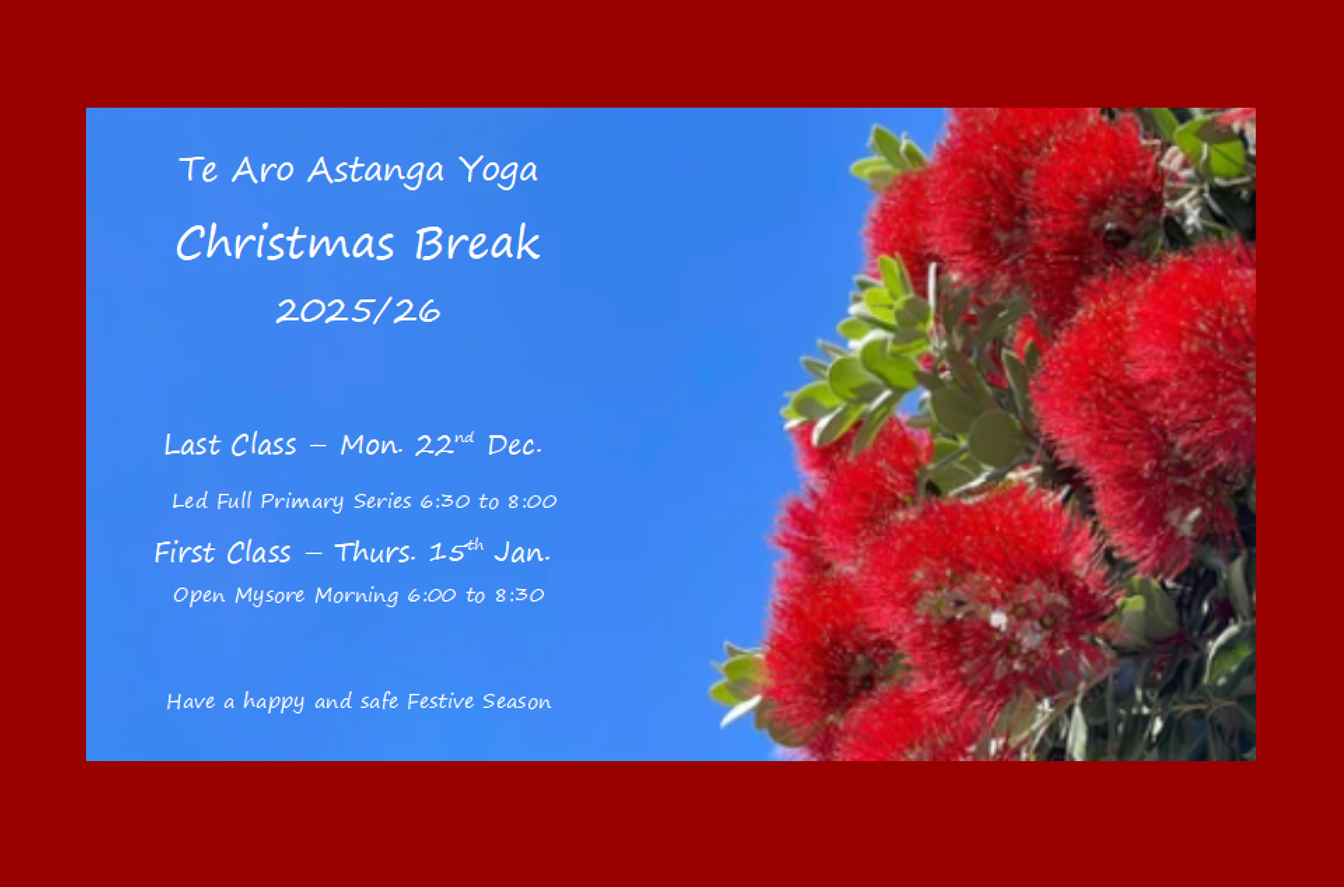Ashtanga Yoga – Bored Doing the Same Sequence?
TAAY Summer Break 2025/26
As 2025 draws to a close I’d like to thank everyone who has supported Te Aro Astanga Yoga this year. I recognise how difficult the year has been financially for many of you and appreciate that you have made the commitment to continue to practice Ashtanga Yoga with us. Te Aro Astanga Yoga is surviving thanks to you! I hope to see you all for a fantastic 2026.
Last Class 2025: Monday 22nd Dec. — Led Full Primary Series 6:30 to 8:00 am.
First Class 2026: Thurs. 15th Jan. — Open Mysore Morning Class 6:00 to 8:30 am
I hope that you and your whānau have a safe and happy Festive Season.

As a very early beginner, I just find that the sequence helps switch off my brain. It doesn’t work so well every single time: I suppose this is part of what you mean by subtle differences everyday. When some parts of my brain switch off, it’s almost like boredom is no longer possible anyway – at least until they switch back on again afterwards!
I’m no scholar, but apparently one of the lessons of the Gita is to enjoy your actions without letting the fruit of those actions be the reason why you do them in the first place. I think this is an amazingly hard lesson to learn and apply in life! Each tiny incremental change is pretty exciting, but maybe if your purpose for practising is to seek these out every single time, then it could start to get boring?
Thank you for the great comment. The beauty about letting go of your attachment to the results of your actions is that you can then focus fully on the action itself. You can then discover that there is a huge amount to be learned and enjoyed in the action. In this situation no boredom or frustration ensues.
Mike
Mike you are a not only a great teacher but a great writer as well! I especially liked this article because I have brought this ‘complaint’ up to you before and like always the physical and mental practise of ashtanga is relfected and shows how you may deal with day to day obligations and life in general. Being a beginner and having not moved on past the Marichysanas is a prime example where I think most beginners have the same struggle. I have often thought, ‘would I ever get past M-D? Could it be that the way my body is designed and the repitition from prior sport and action have caused perminant tightness to my knees.’ This questionable thinking and negative thought patterns made me realize that through this practise I have been using these types of thought processes throughout my normal day life and that these thoughts have been hindering my motivation, energy and outlook on normal day to day obligations and activities. This is why the repeated action, as you said is very important as it teaches you to reflect not only on the progress of your physical practise, but the progress of the way to free and clear the mind of stresses that ultimately play a negetive role in your life. Yes okay, we will all have negative thoughts every now and then, but I can definately say that my ashtanga practise has helped me to develop the awareness of this repetitive thought process that has played negetive effects on my whole life to this day. This is the wisdom that I have gained and I think this should be recognized because its the base and foundation to successfully achieve the long road of the last 3 limbs or paths of ashtanga. Please excuse if there are any mistakes in this, feeling quite jetlagged and havent slept much! Haha Cheers Mike
Great comment, thank you Quinn. I hope that you are enjoying your time in Bali and looking forward to the adventure of being and practicing in Mysore. It will be great to catch up with you again next time you are in Wellington. All the best, mate,
Cheers,
Mike